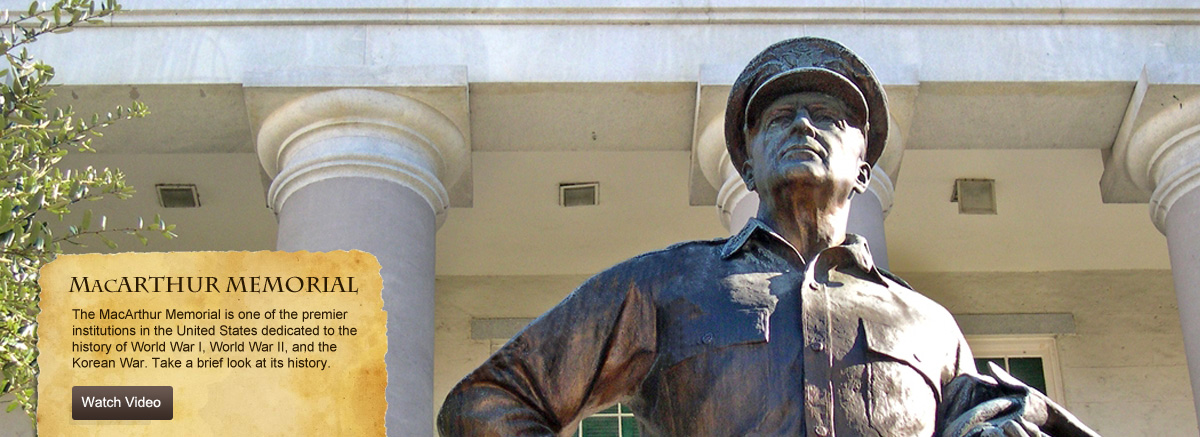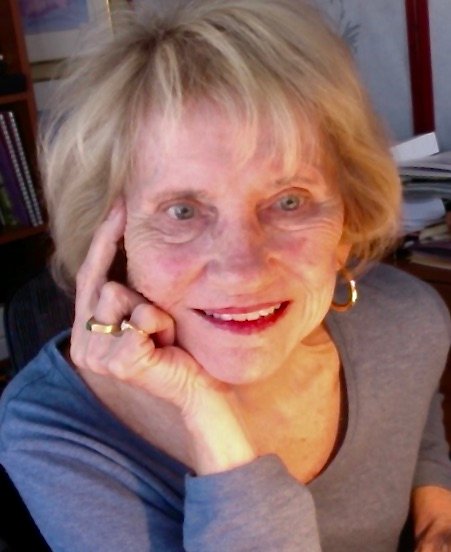http://www.waybackwhenmagazine.com/A-Festival-Of-US-History.html 2-21-14
Radio: http://www.podsnack.com/BigBlendMagazines/a7nldss8
Story by Norman E. Hill and photos by Maralyn D. Hill
A Festival of U.S. History Norfolk, Virginia
By Norman E. Hill; Photos of MacArthur Museum by Maralyn D. Hill
Maralyn and I visited Norfolk, Virginia, to take part in its Wine Festival Weekend. While we enjoyed this event, we also had a chance to experience some fascinating history of the Norfolk region. Norfolk is the second largest city in the state, and we were surprised to see that it is about 30% bigger than the state capital, Richmond. Actually, the largest city is nearby Virginia Beach, with 80% more people than Norfolk. Norfolk apparently came close to settlement by the crew that ultimately founded Jamestown farther inland. The city itself was founded in 1682. Its strategic location was evident, being close to the intersection of Chesapeake Bay and the Atlantic Ocean. During the American Revolution, British forces bombarded the town, so that a sort of souvenir cannonball is still intact in a church.
From the Civil War, much has been written about the historic battle between two armored ships, Monitor for the Union and Merrimack (also known as CSS Virginia) for the Confederacy.
The Merrimack was adapted from a partly sunk Union vessel, the Merrimack. At the Hampton Roads naval yard, it was fitted with armor. It could have had a “shot” added, but was only equipped with a shell. Otherwise, the Confederate vessel might have been impregnable. The Union vessel was based on an unorthodox design from a Swede, John Ericsson. It was equipped with shot, although only half as much as originally intended. The battle lasted two days. On the first day, the Merrimack spread havoc among wooden Union ships, sank two of them, and forced another aground. When Monitor arrived for the second day, the two armored ships squared off against each other, in what has often been considered a draw.
Of more significance than the immediate battle was that the Union blockade of the Norfolk harbor remained intact. The Confederates had hoped that Merrimack would break the blockade wide open, but their hopes were quickly dashed.
In the early 20th century, the Norfolk naval base started operations. Its size and importance greatly grew during World War I. During the 20s and 30s, with low Congressional budget appropriations, growth tapered off. Then, with World War II and, even more, with the Cold War, Norfolk grew into the world’s largest naval base.
Today, about 40% of the Norfolk area’s population serves in or does work related to the military. Tourism, of course, is also very important to the region’s economy. Besides Norfolk and Virginia Beach, several other cities such as Hampton Roads make up the entire Norfolk area.
The naval base itself, officially Naval Station Norfolk, is open to tours. The Chrysler Museum of Art and the historic battleship Wisconsin are also very popular and well attended. We saw several of these in a helicopter tour, courtesy of Hampton Roads Helicopters. We went on a driving tour of the Freemason and Ghent districts. They featured an eclectic group of restaurants and art galleries. Right after the tour, we visited the Stockley Gardens Art Festival. Artists showed works using paintings, photos, jewelry and pottery. Harbor cruises are available on ships like the American Rover. One morning, we enjoyed a harbor cruise where sails were soon set. This tour included an enjoyable brunch.
We thoroughly enjoyed our visit to the General Douglas MacArthur Museum.
Although MacArthur was an Army man, his mother was from Norfolk. He agreed for the museum in his honor to be built here, as long as it was open free to the public and also open year around (except Christmas and Thanksgiving). As a history buff, I had studied many aspects of MacArthur’s life like the General’s battlefield prowess in World War I, his first (unsuccessful) marriage, his command to break up the depression-
When World War II started and the Japanese invasion proved far more formidable than anticipated, MacArthur was ordered to leave his troops and retreat himself to Australia. Due to faulty plane equipment, he and his family made the hazardous trip, through Japanese fire, in a small boat. Several of MacArthur’s strategic maneuvers brought him renown. During the remainder of World War II, his “island hopping” cut off Japanese forces in many Pacific islands and avoided bloody battles that would otherwise have taken place. In the Korean War, starting from his position as de facto ruler of postwar Japan, his landing at Inchon effectively outflanked North Korean forces that had pushed U.S. troops into a small, battered southeast tip of South Korea. Afterward, MacArthur’s dispute with President Truman and his dismissal have been well publicized and controversial. From Inchon, U.S. and allied forces had routed the invading North Koreans and had taken over most of their piece of Korea. Then, Chinese Communists attacked, aided by fighter planes known to be piloted by Soviets. Truman ordered a safe sanctuary for them across the Yalu River, so their forces could be resupplied and rested. At the Museum, new archives have revealed that the Soviets had apparently moved atomic weapons close to the Yalu.
MacArthur’s claim that there is no substitute for victory was very popular back home. As U.S. forces were forced to retreat back into South Korea, giving up hard fought territories with heavy casualties incurred for nothing, was a bitter pill to swallow. A costly stalemate eventually led to Korea remaining divided, just as before the invasion, where it stands today.
MacArthur’s faults, along with his strong points, and some new aspects of each, are highlighted in the MacArthur Museum. It helps to assure that his place in U.S. history, as one of its most important figures, will never be forgotten.
We only skimmed the surface of the host of attractions in the Norfolk area. We know it will be worthwhile to return in the not too distant future. For more information, go to www.visitnorfolktoday.com
To listen to their podcasts go to http://www.macarthurmemorial.org/192/Podcasts.







